They’re closing more stores across Florida, but Sears and Kmart have a memorable look
They’re disappearing from the South Florida shopping landscape.
Sears and Kmart stores, now joined by a parent company, are closing one by one. The latest shutdowns include the Sears stores in Key West and Fort Lauderdale.
Sears seemed to be in every mall, Kmart in every city. Now you have to look hard to find any left.
The memories are more accessible than the stores these days. Walking into Sears and smelling the rubber from the tire center. Walking into Kmart and smelling the popcorn at the snack bar. The Winnie the Pooh children’s clothes and catalog desk at Sears. The blue light specials and layaway department at Kmart.
We know why the stores are disappearing. A parent company that has struggled to keep them stocked and vital. The pressure of the real estate market and the lure of redevelopment. The shift to Target and Walmart and Ross Dress for Less. And of course, Amazon and other online retailers.
Kmart arrived in the 1960s, an offshoot of the Kresge five-and-dime stores that dotted downtowns. Sears arrived in downtown Miami in 1929, punctuated by the iconic tower that still exists as part of the Arsht Center for the Performing Arts. Kmart staked out big footprints in the suburbs. Sears moved into the malls.
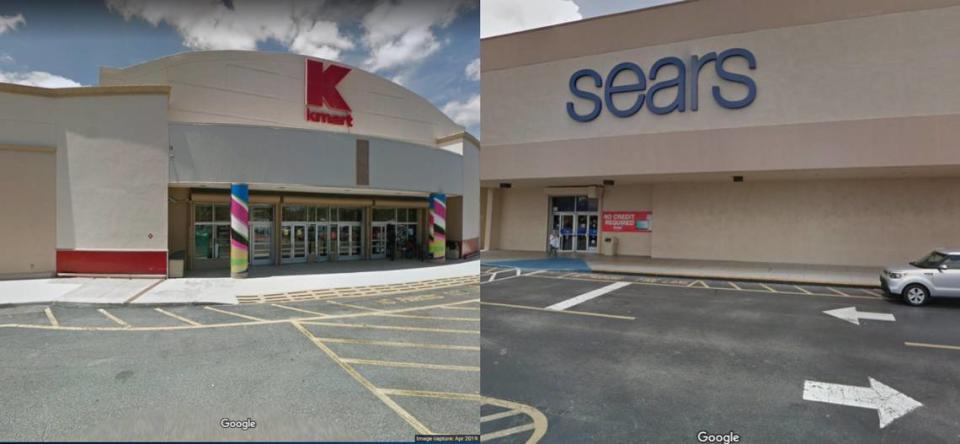
Here is a look at the two department stores in South Florida from the archives of the Miami Herald:
Sears

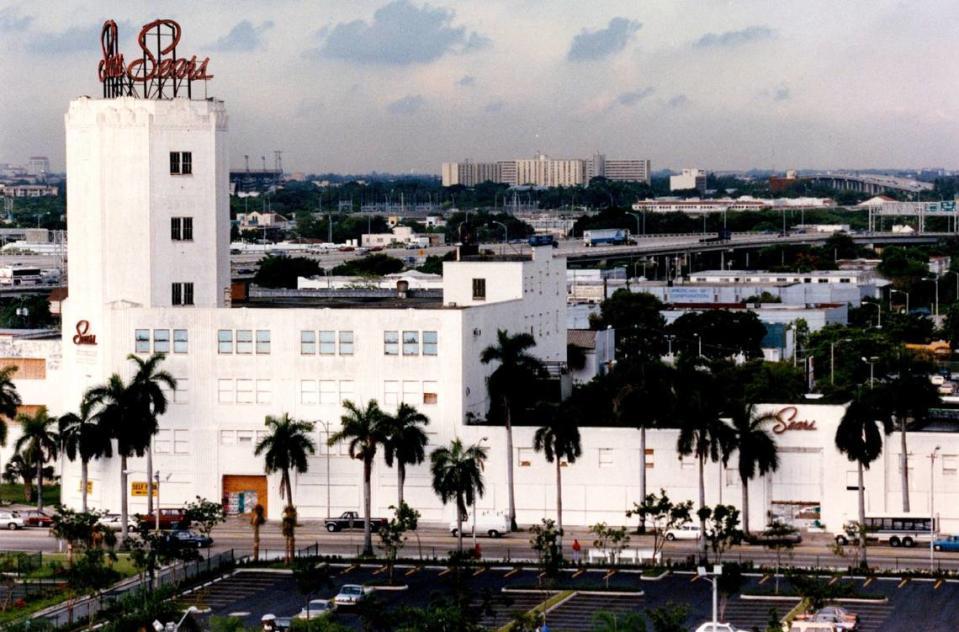

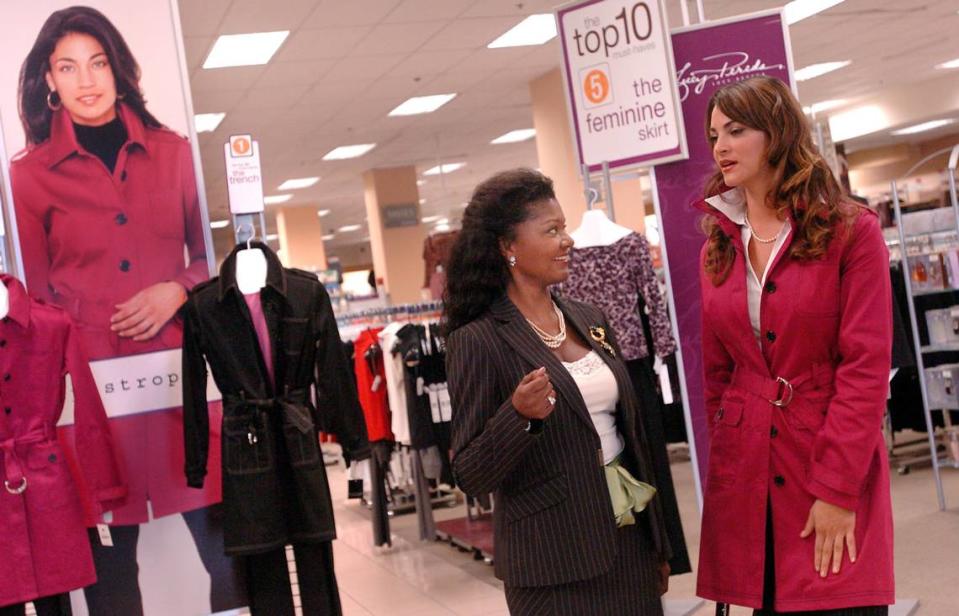
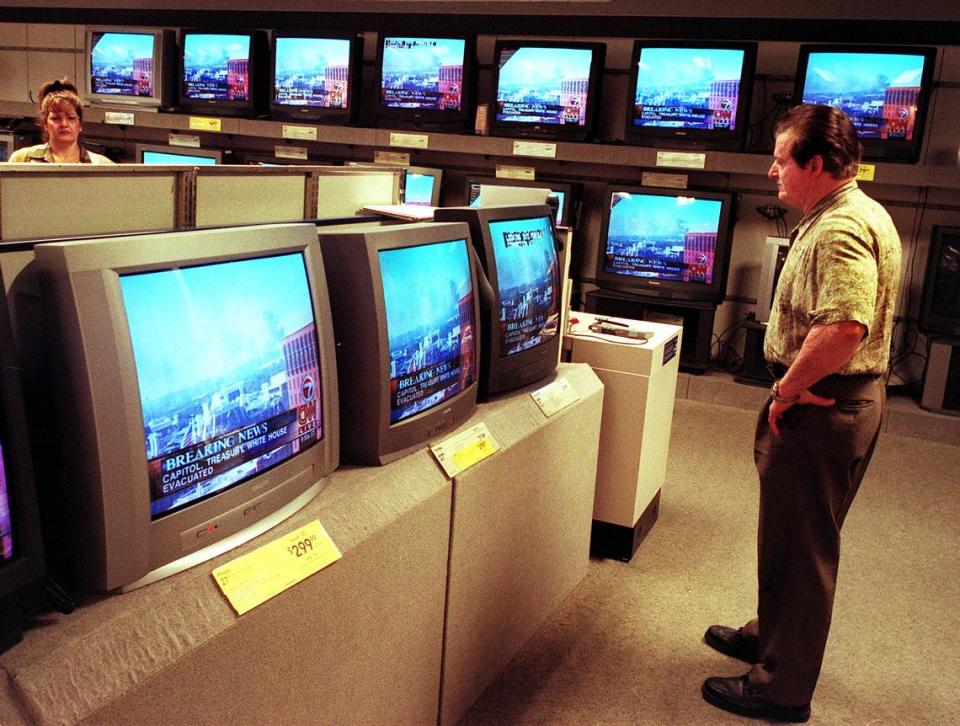
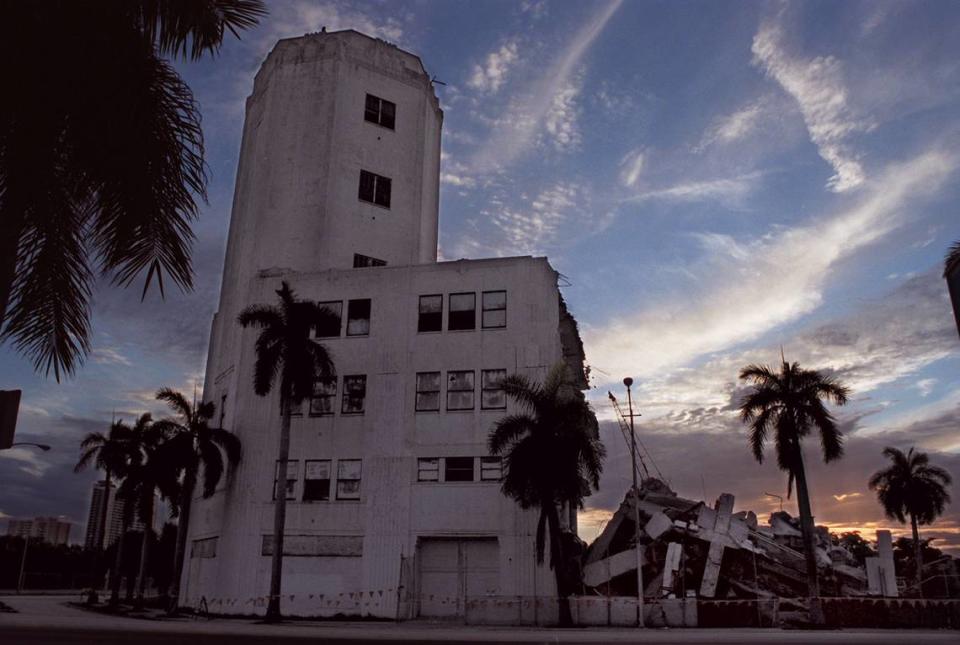

THROUGH THE YEARS
Born of Miami’s boomtime, lauded as “Miami’s Eiffel Tower,” castigated as “a big, ugly nose on Miami’s face,” the 1929-era Sears Tower has survived decades of neglect and repeated attempts to tear it down. Now dubbed the “Art Deco Tower,” it stands tall as the architectural sentinel of the Miami Performing Arts Center.
Here’s how it got where it is:
1929: Sears, Roebuck & Co. opens its Florida flagship at Biscayne Boulevard and Northeast 13th Street. It’s part of a plan in which the boulevard is to become Miami’s equivalent of Chicago’s Michigan Avenue. Six thousand shoppers attend. Miami Mayor C.H. Reeder declares it “the finest store in the South.” Sears’ Chicago architect, George Nimmons, says he followed no historical style in the 120-foot tower with its concrete flora and fauna and bas-relief ziggurats. Later, architects declare it Art Deco - and one of the first such buildings in South Florida.
1983: With the building decaying and sales slumping in the area, scarred by the riots of 1980 and 1982, Sears closes the store. *
1991: Sears donates its building and 3.56 acres for the proposed Miami Performing Arts Center. Preservationists implore planners to save the old building and incorporate it into the new complex.
1992: Charles Dusseau and two other county commissioners raise MPAC supporters’ ire by proposing to use the Sears building as a homeless shelter. ... The big red neon Sears signs are removed.
1995: Saving the tower becomes controversial. Supporters call it Miami’s Eiffel Tower; critics compare it to “a big ugly nose.” PAC leaders encourage the three architects bidding to incorporate the Sears tower and its four-story wings.
2000: In a compromise, the tower is spared as workers raze the wings. It becomes the Art Deco Tower - part of the MPAC.
2005: Looking back, MPAC architect Cesar Pelli says: “At the beginning, we thought it to be best for the Sears Tower to disappear. But I must say, I have grown to like it, to enjoy the juxtaposition, to have designed around it and have it become an element in the new piazza.”
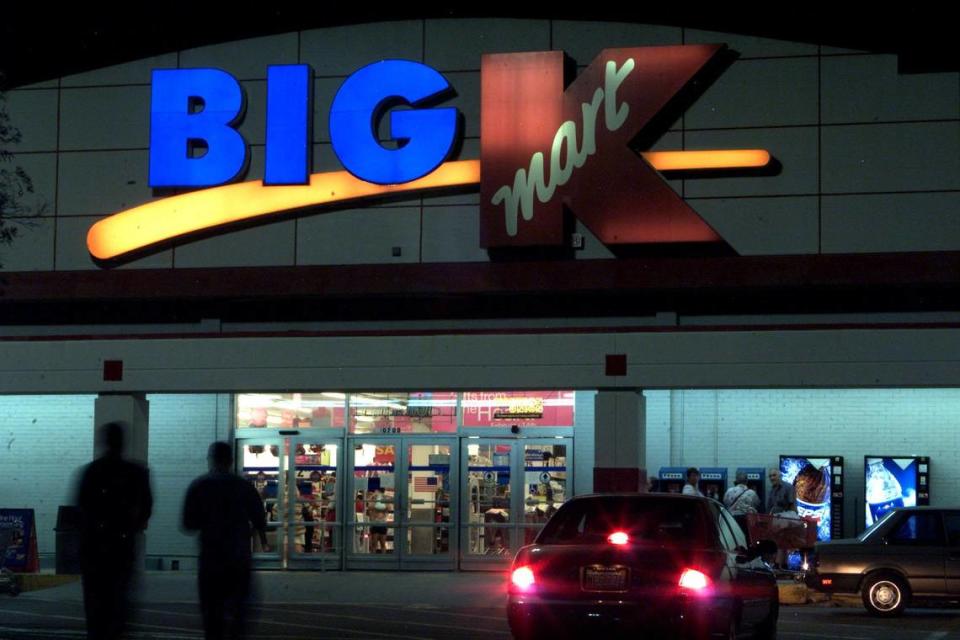
Kmart
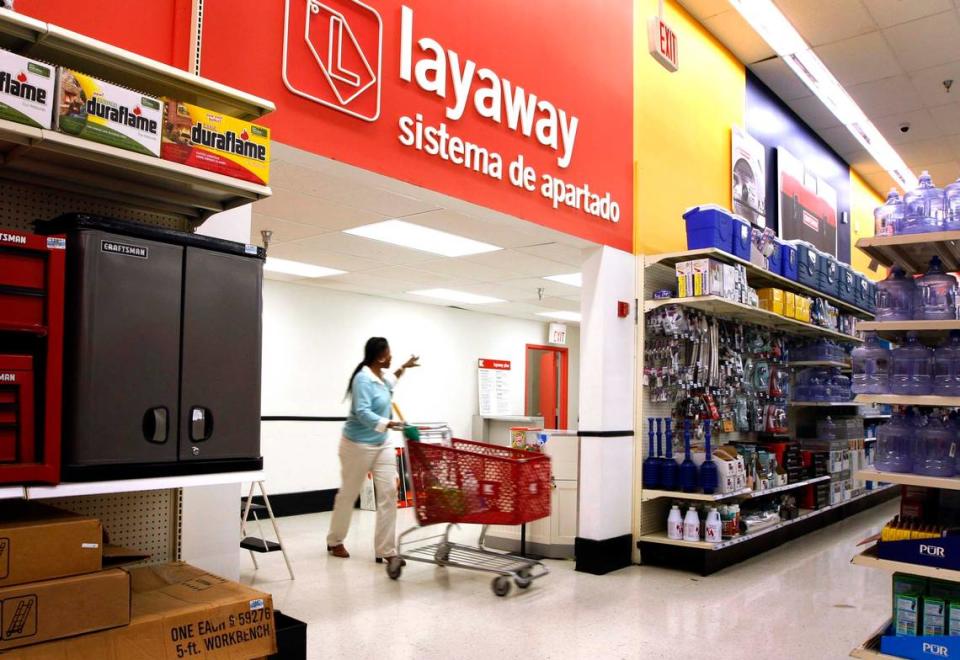
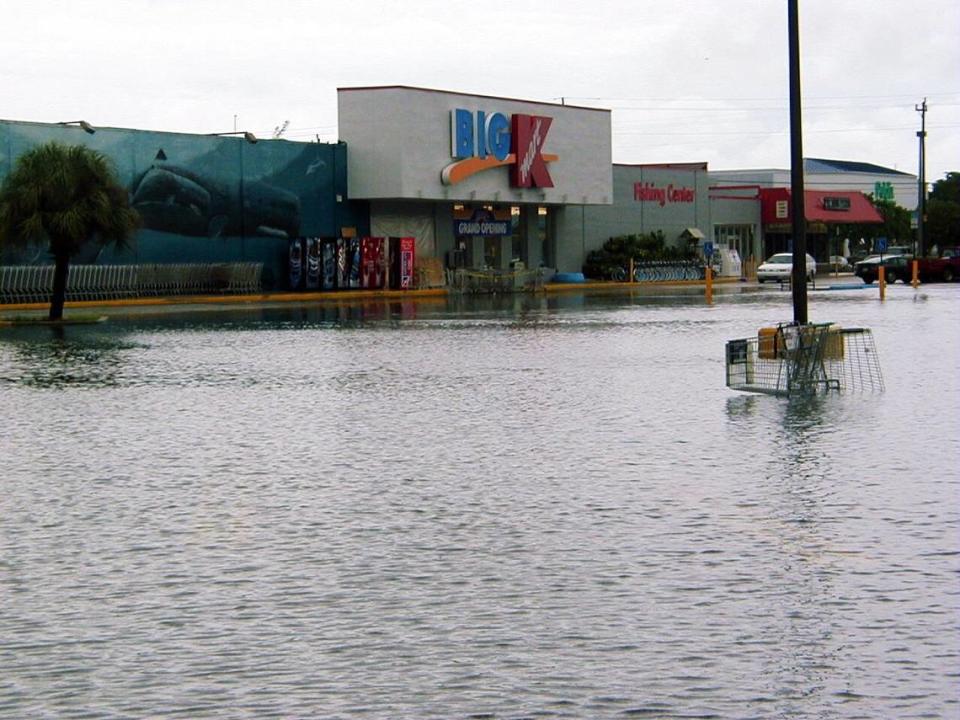
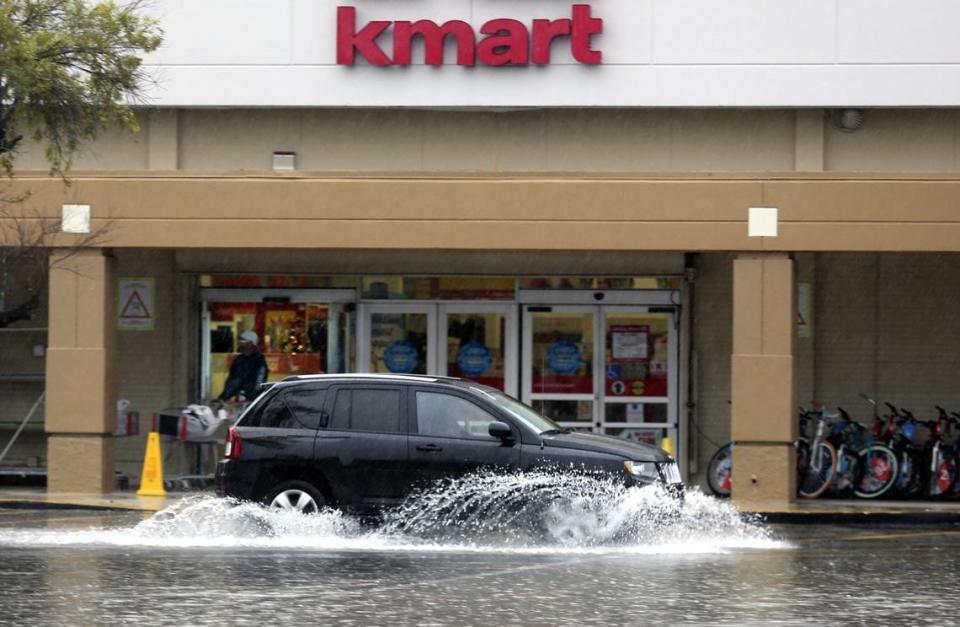
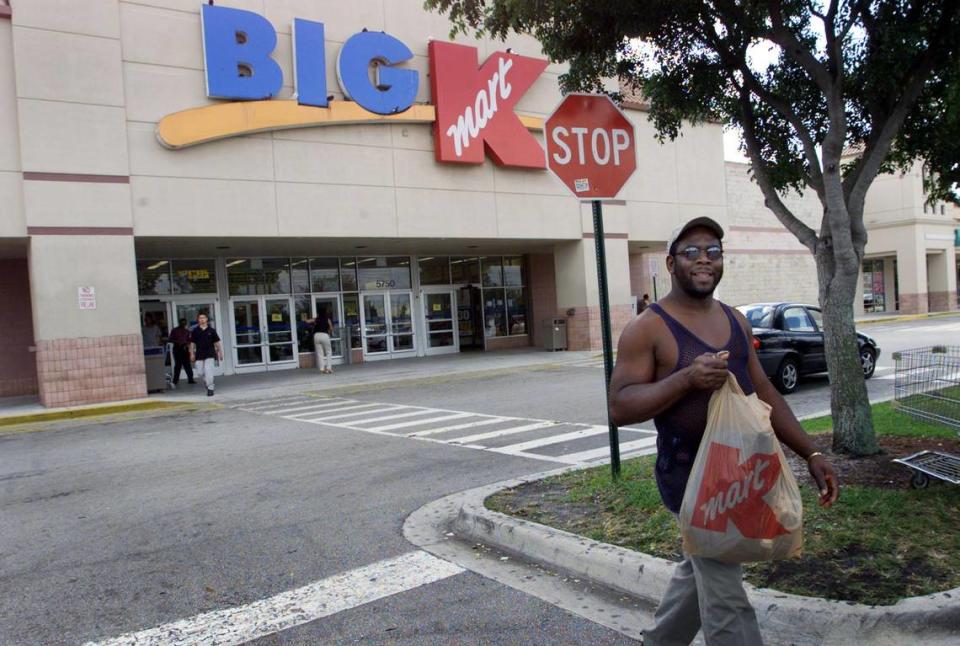
KMART FINANCIAL CRISIS
Originally published Jan. 20, 2002
While crafty old Sam Walton promoted a “just folks” ambience for his Wal-Mart stores, savvy technology was his real advantage in winning customers away from archrival Kmart.
Walton championed cost-cutting technology at his chain of discount stores long before Kmart realized its importance.
Retail historians say Walton was the first to take bar-code technology from supermarkets and put it into general retailing. Wal-Mart also beat Kmart in early use of electronic cash registers and putting computers into stores.
By most accounts, Wal-Mart still leads today in systems that forecast what customers want to buy and control purchasing and inventory.
That isn’t the only reason Kmart is facing a financial crisis that could land it in bankruptcy court. Retailing veterans point to several other factors:
- Poor customer service.
- The acquisition of bookseller Borders Group, the Builders Square home improvement chain and other retailers as a diversification strategy, only to spin those stores off again a few years later.
- The inability to decide just what kind of discount store it wants to be. Should it be the low-price leader like Wal-Mart, or offer a better ambience and higher-quality discount merchandise like Target?
But almost everyone agrees that it was lagging technology that hurt Kmart the most.
Its technical ineptitude made it more costly for Kmart to track, order and distribute goods to its stores, forcing it to charge more than Wal-Mart for the same products. It also made it more difficult for Kmart to keep merchandise, especially merchandise shoppers wanted most, on store shelves.
As customers fled, sales stagnated. First, the cash needed to build new stores and renovate older ones dried up. Now, Kmart is running short of money to pay its bills and loans.
By last month, Larry Schulsinger, a retail analyst with Management Ventures in Washington, D.C., had already become pessimistic about Kmart’s future.
“They are not dead yet,” he told Baseline, a technology journal. “But for Kmart to get back in the game would be one of the greatest miracle comebacks ever.”
The first Kmart opened in Garden City, Mich., in 1962, and Walton opened his first Wal-Mart that same year in Arkansas. For nearly 30 years, Walton could only look up at Kmart, which ranked as the nation’s leading discount retailer.
It was only in the early 1990s that Wal-Mart overtook Kmart in revenues, with $32.6 billion in annual sales to Kmart’s $29.5 billion, and 1994 when Wal-Mart finally had more stores.
Since then, Kmart has stagnated while Wal-Mart has rocketed ahead to become bigger than General Motors in some measures and with twice the number of stores as Kmart and five times the amount of sales.
Wal-Mart’s technological edge was born in the mid-’60s when Walton went talent-spotting at an IBM training seminar. The notoriously penny-pinching Walton splurged on computers because he understood that tracking inventory and sales was the key to being the low-price leader.
The use of bar coding was an early victory.
“That was a revolution, and since then everyone else has been trying to catch up,” said Tom Steinert-Threlkeld, editor of Baseline. Kmart has “tried many times to get up to Wal-Mart’s level, and for whatever reasons have not done so.”
Wal-Mart’s technological edge can be glimpsed in a key measurement: how often a retailer replaces its total inventory. The more efficient Wal-Mart turns over its inventory a brisk 7.29 times a year, compared to a much slower 4.39 times for Kmart.
The faster turnover allows Wal-Mart to respond more quickly to customer needs. Kmart, on the other hand, has unsold inventory clogging its shelves, storerooms and supply chain much longer.
When Chuck Conaway took over as Kmart’s chief executive in mid-2000, he found that Kmart had 15,000 trailers of unsold merchandise sitting outside stores because there was no place for the merchandise in storage rooms.
Getting that backlog cleared out became an early priority for Conaway, who acknowledged last fall: “I believe the supply chain is really the Achilles’ heel of Kmart.”
According to In Sam We Trust, a book chronicling Wal-Mart’s rise, by 1983 the more efficient Wal-Mart spent 2 cents of each dollar of sales getting goods to its stores. Kmart’s costs were 5 cents - a considerable disadvantage.
Kmart, of course, also automated its processes, as did virtually every business in America. But Kmart consistently trailed Wal-Mart in doing so.
In 1973, according to a Baseline history of the competition, Wal-Mart had computers in a third of its stores. Kmart didn’t approach that level until five years later. Later, in the late 1980s, Wal-Mart again beat Kmart in using electronic networks or “extranets” to deal with suppliers.
Kelly Major, a former director in Kmart’s sporting goods division and now with Brogan and Partners, a Detroit advertising and public relations firm, said information used to make decisions could be frustratingly unreliable.
“There was not a lot of confidence that the information we were getting was good because people in the stores were saying, ‘We’re out of stock of this, we’re out of stock of this, we’re out of stock of this,’ but our reporting was saying, ‘You shouldn’t be,’ “ she said. “It’s not that I didn’t believe the people saying that. There was just always a lot of confusion in the system.”
Retailers face special problems in automating their companies. Each Kmart store stocks upward of 70,000 items, and with some 2,100 stores, Kmart’s computers have more than 140 million possible matches to keep track of. Add in distribution centers, various shipping companies and a host of suppliers, and the shape of the problem begins to emerge.
When Conaway took over, Kmart invested heavily in new systems by i2 Technologies, a highly regarded designer, but Kmart has had trouble integrating the program with its existing systems.
Yet these problems with technology were only one issue bedeviling Kmart over the years. An even more basic problem was deciding what kind of company it wanted to be.
Major said Kmart got “stuck in the middle” between low-price leader Wal-Mart and the somewhat more upscale brands and ambience of Target.
Wal-Mart had the technology and buying clout to be able to undercut Kmart’s prices. And although Kmart went for brand identification with Martha Stewart and other key lines, Target still beat them on key measures like inventory turnover and sales per square foot.
Kmart’s split personality can be glimpsed in how it handled it signature Blue Light Specials. Kmart abandoned the famous sales technique in the early 1990s to focus on a new image. Yet for years afterward, shoppers would come into a Kmart store and ask about it. Conaway finally restored the Blue Light in 2001.
By all accounts Kmart has made progress in recent years toward its goals. Inventory turnover, while far behind Wal-Mart, has improved from 3.1 times per year in 1996 to 4.39 times today. Another key measure, sales per square foot, is also up, although still well short of Wal-Mart’s performance.
But does Conaway have enough time to make more improvements? Kmart’s cash is dwindling just as the company needs to upgrade both its stores and its central control systems. Some analysts are floating talk about a bankruptcy filing, and Kmart’s stock has sunk to its all-time low.
“Kmart has had a lot of innovative things over the years,” Major said. “I just think the water got muddy. In hindsight, which is always 20/20, there were just too many things they were focused on.”

 Yahoo Movies
Yahoo Movies 